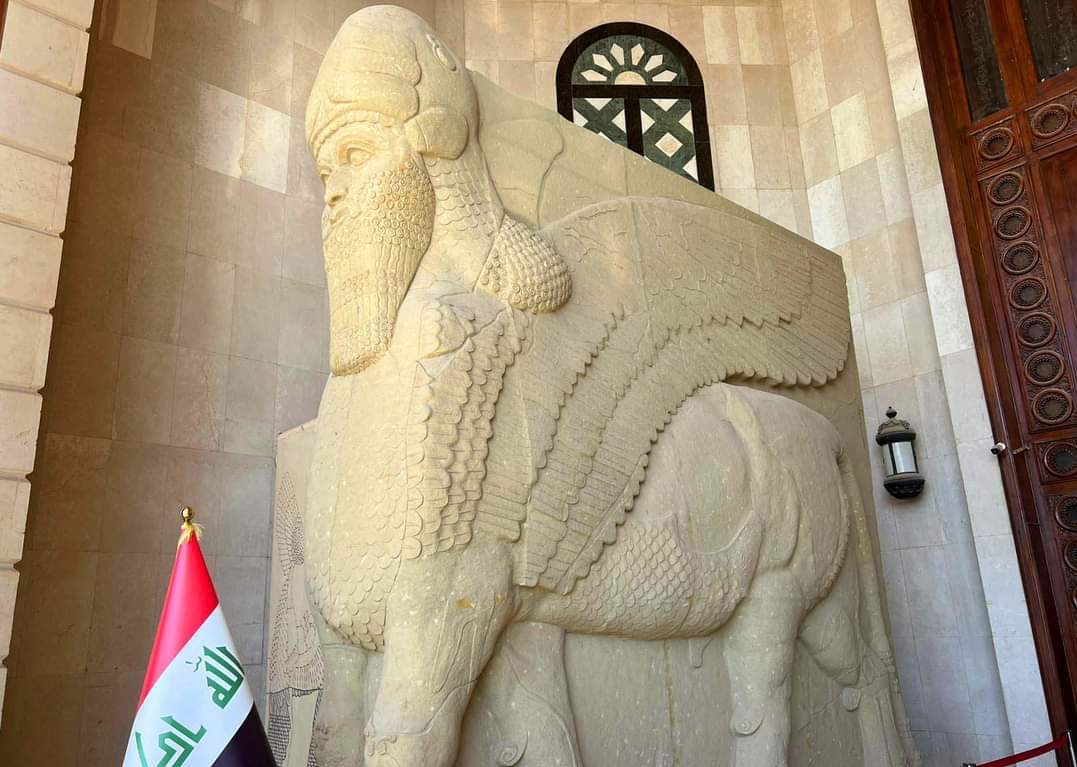The Bull of Nimrud destroyed by Isis revived in Iraq thanks to an intervention by Italy
A “miracle of Italian cultural diplomacy” is how Italy’s gesture in donating to Iraq the replica of the Assyrian statue of the Bull of Nimrud, the colossus built in the 9th. century BC, has been described. The ancient city of Nimrud, near present-day Mosul, was the capital of Ashurbanipal II (883-859 B.C.E.), the Assyrian king who built a huge palace adorned with bas-reliefs and numerous lamassu; In ancient Mesopotamian religion, these are protective spirits or demons. They often formed pairs with the ShÄ“du: colossal guardian statues, of demons or animals, that were placed at the sides of the entrance gates of temples and palaces, just as the Bull of Nimrud was.
The 5-meter-high monument was destroyed by Isis fighters in 2015, who attacked the archaeological site and destroyed valuable artifacts using bulldozers and explosives. After the attack, a team of restorers led by Nicola Salvioli studied photos and videos of the monument, enabling them to create a polystyrene model. A 3D printer was then used to produce a fiberglass copy, which was coated with plastics mixed with stone dust to give it a more authentic appearance. The project was funded by the Meeting of Civilizations Association. Italian artisans recreated a replica by then displaying it at the Colosseum in Rome in a 2016 exhibition entitled Reborn from Destruction. Ebla, Nimrud, Palmyra alongside two other reconstructions: of a portion of the ceiling of the Temple of Bel in Palmyra, and of the archive room of the Palace of Ebla. The following year, the monument was moved toUNESCO headquarters in Paris, where it stood in front of the entrance as a “Symbol of the organization’s commitment to sharing history and transmitting the values it carries to future generations,” UNESCO said. The bull’s return to Iraq, now permanently positioned in front of the entrance to the Basra Museum, follows a high-profile rededication to the country in June. On that occasion, Italy returned an engraved tablet with cuneiform text and the insignia of Assyrian King Shalmaneser III, successor to Ashurbanipal, to Iraqi President Abdul Latif Rashid during a state visit to Italy.
“Italy is in the forefront of safeguarding cultural heritage because it is the soul of a nation and embodies its history,” said Gennaro Sangiuliano, Italian Minister of Culture, in a statement read during the museum’s opening ceremony attended by Italian and Iraqi officials. “It will therefore continue to make every effort to promote international cooperation in the field of cultural heritage protection and to work for the enhancement of the heritage of humanity.”
Francesco Rutelli, the former minister of culture whose Associazione Incontro di Civiltà that had spearheaded plans to make the replica, wrote on Facebook, “Here is a light, a precious Italian light,” He also added, “The donation is a small miracle of Italian soft power, of our cultural diplomacy.”
 |
| The Bull of Nimrud destroyed by Isis revived in Iraq thanks to an intervention by Italy |
Warning: the translation into English of the original Italian article was created using automatic tools. We undertake to review all articles, but we do not guarantee the total absence of inaccuracies in the translation due to the program. You can find the original by clicking on the ITA button. If you find any mistake,please contact us.



























